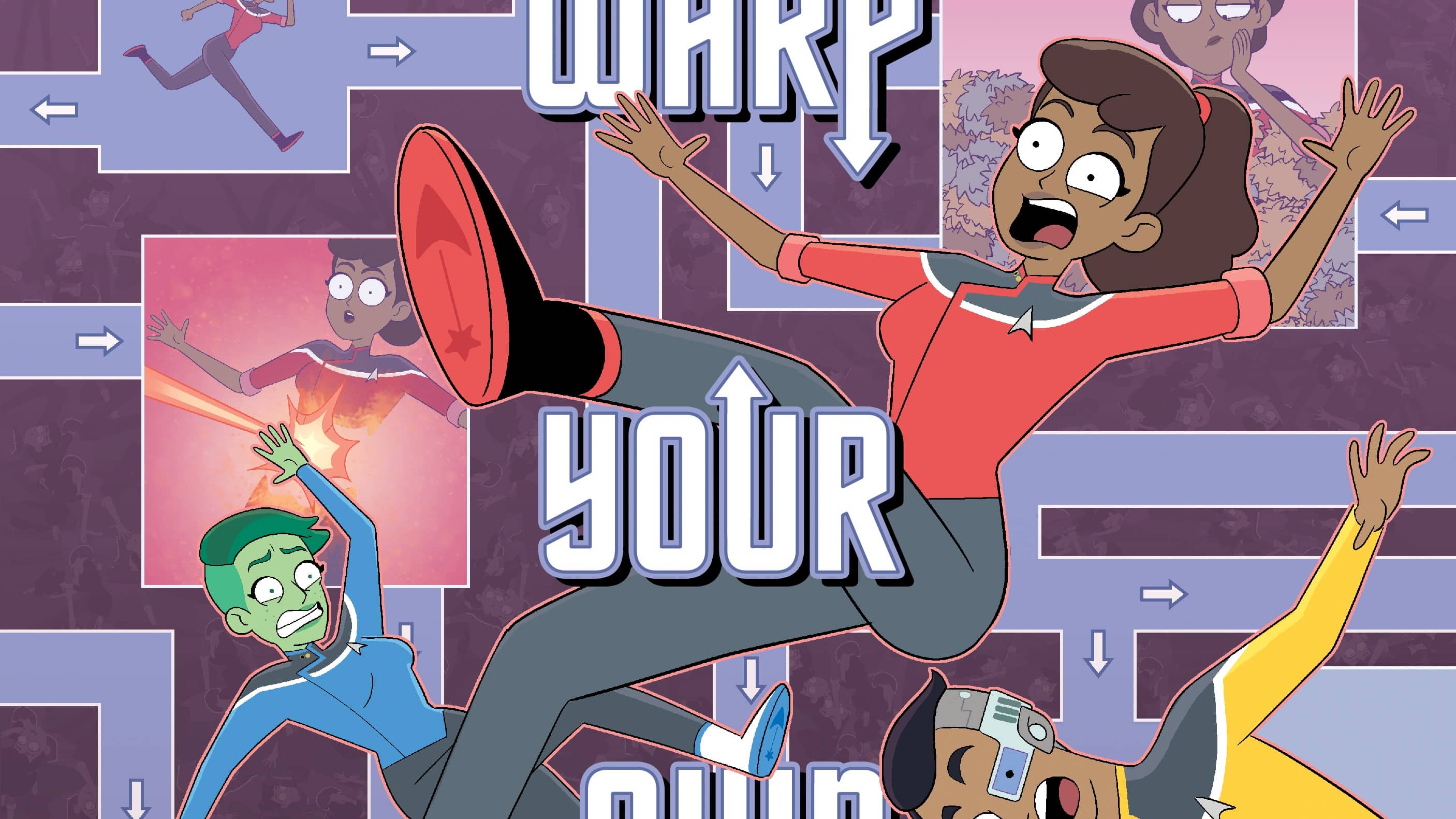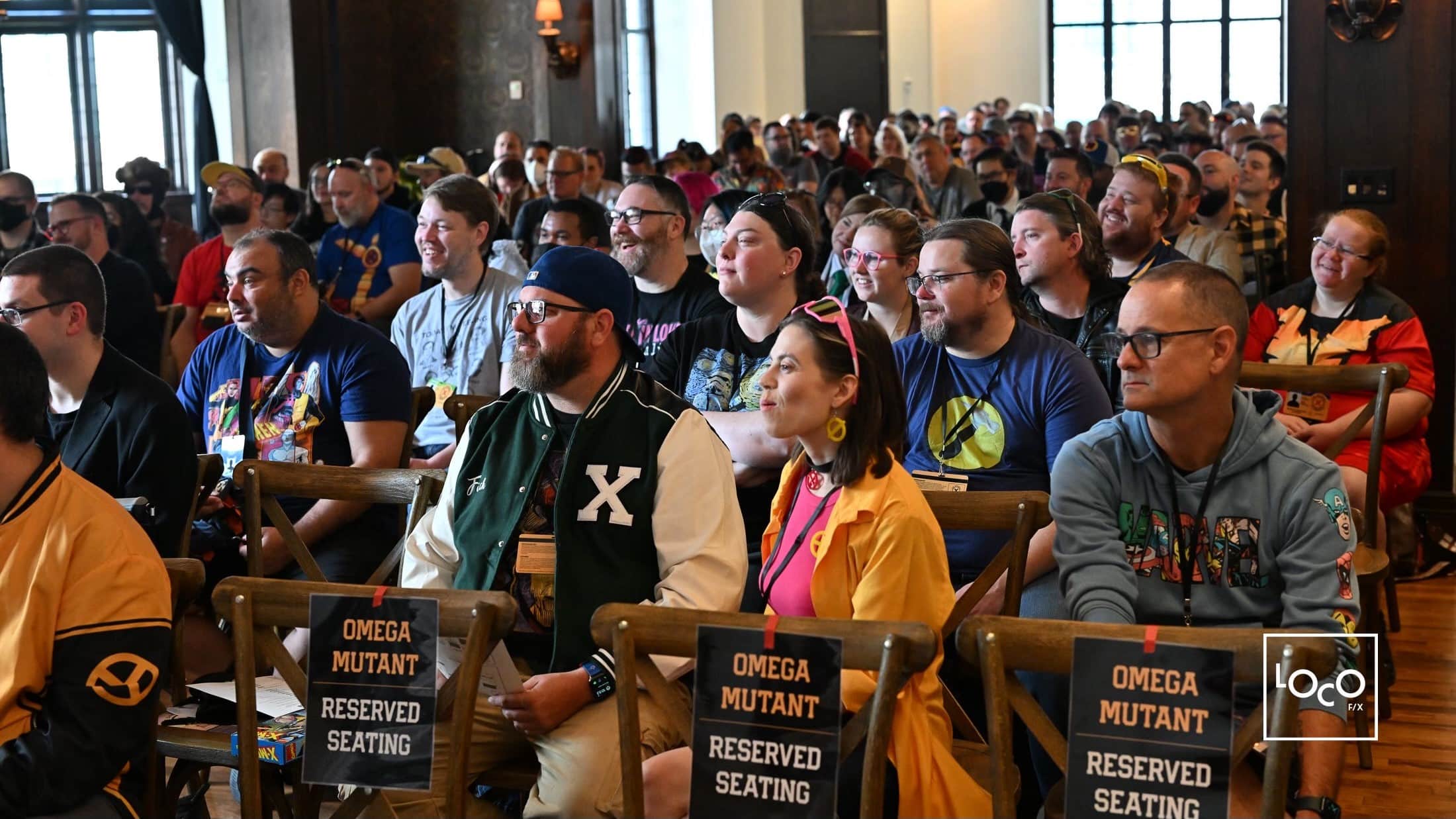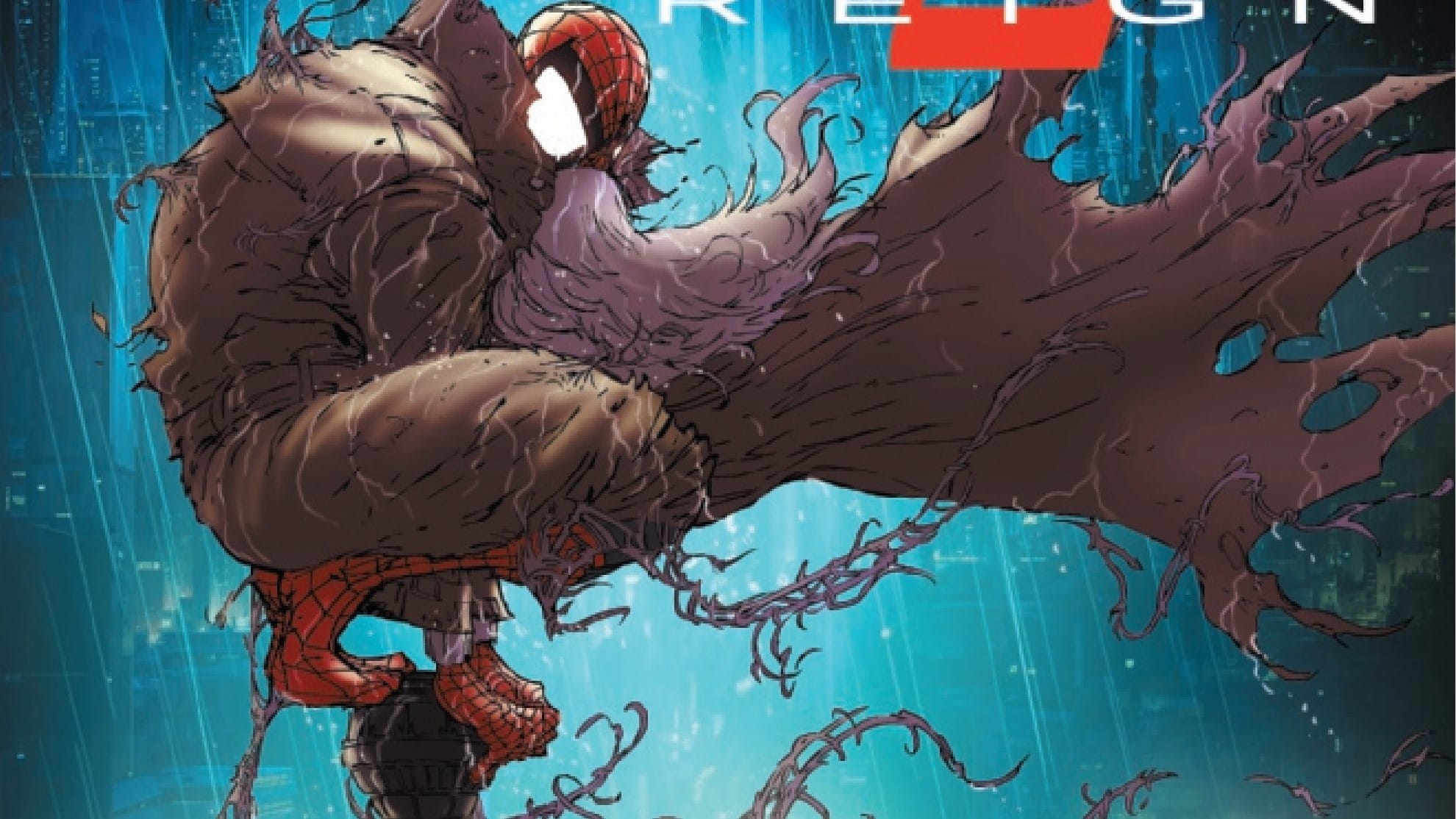Steve Foxe is a writer and editor working in both comics and children’s books. His new title Spider-Ham: Great Power, No Responsibility just recently dropped from Scholastics Graphix and he sat down with us to discuss.
Zachary Jenkins: You have a history writing books for children, which I think a lot of people who are more familiar with your work from the comic space, where you do a lot of editing and writing for horror books, may not have put those two together. So I’m curious, what’s your background with books for kids?
Steve Foxe: I went to college in a program where you could create your own major and I studied comics and children’s books. While I was there, I interned at Marvel comics, then I interned at Random House Children’s Books, and Random House had an opening when I graduated. I actually worked at Random House Children’s Books for five years as an editor. While I was there, I started writing various licensed projects. My first publication ever was a Witchblade comic. So not for kids, you know, decidedly not for kids. There was a period where a lot of the doors that are opening for me were in the licensed kids world, so it was a sort of an easier path for me to pursue.
And I also just love it. I find it very fun. It’s, it’s great to get emails saying, oh, go, do you want to write Pokemon? Do you want to write Super Mario? Do you want to write Grumpy Cat? And properties I’ve never heard of because I was too old for them; I did three Baby Shark books. They’re just fun projects to do and it came directly out of me working in the children’s industry.
My big passion is sequential comics and horror storytelling. So I really just kind of never picked a lane. Like people have allowed me to do everything. So I just keep doing everything until someone tells me no.
Zachary: With your passion being in sequential storytelling and comics, and especially on the horror genre, do you have to do anything different when you’re approaching a licensed kids project or even even an original kids project versus a book that’s decidedly, not for children.
Steve: My approach has always been kids don’t really want things dumbed down for them. They don’t want things with the edges sanded off. Kids is not a monolith. Some of my licensed kids’ books, we’re talking about four year olds, very beginning readers through to things like Rainbow Bridge, which is for, you know, young teens.
Zachary: That’s the book you did with Steve Orlando…
Steve: And Valentina Brancati, at Aftershock! Yeah. Aftershock kicked off Seismic Press, their young readers imprint, with Rainbow Bridge.

Oftentimes in the mainstream comics world, you have conflation between middle-grade and YA. People tend to use YA as a catch all or children’s as a catch all, but talk about about such distinct life periods. If I’m doing like a licensed book, I have some vocabulary constraints or it’s a certain number of characters per line. If we’re talking about something like Rainbow Bridge or even Spider-Ham: Great Power, No Responsibility, I don’t really approach those any differently than I would an adult comic with the exception of swearing, graphic violence or explicit sex, like other than the very obvious, hard things you would expect to be no go’s.
And most kids work. I treat them exactly the same because I think kids want to be treated like mature intelligent, intuitive readers . In Spider-Ham, when I turned the script in, that was my first project with Scholastic and my first project with Marvel, I had no idea if they would like my approach or if it would be a “too much of this is adult” or “let’s tone this back”. And I was very relieved and pleased that they liked my take on this where I don’t think I would have written to any differently if it was being published through Marvel’s main line.
Zachary: One of the key things I know Scholastics is pushing with the Graphix line, especially as these “Chapters” books, is that these are not for the newest reader but for someone who is trying to expand into a larger skill set with reading. They are pushing comics literacy, pushing “here’s how you simply read a comic.” I was reading a book today just as example, New Mutants where Rod Reis doing these exquisite extraordinary layouts. And if that’s your first comic you may struggle.
How do you parse all of that when you’re doing a book like the Spider-Ham book? How do you write the script so that it is going to help the artists drive very simple, straightforward storytelling in their sequential work?
Steve: I also write a series called Adventure Kingdom, which runs on the Epic app. So those, you’re usually thinking three to four panels per page, which is a bit fewer than you’d see on a lot of mainstream monthly releases and probably less of the like Simone Bianchi, like strange layouts across two pages. But again kids are more intuitive than we think. Beyond keeping the panel count lower and keeping the actions clearly demarcated, there’s not a lot you have to do to differently.
I work with Shadia Amin on Spider-Ham and she’s fantastic and she’s worked on other properties for younger readers. She’s got a great sense of storytelling and Spider-Ham also is, you know, it’s a straightforward action adventure story. It’s not a super psychological read or anything you know, hallucinogenic. So it lends itself to straight forward visual action storytelling. But yeah, I mean the most practical thing is really just keeping the panel layouts a bit shorter than you would in an adult comic.

A lot of the rest of the work goes to Shadia and I’m lucky we’ve worked together on multiple projects now. I can’t say anything officially, but Scholastic tweeted at one point that Spider-Ham is, you know, the first in a series. So we’ll see what that means. We also did a short together for Adventure Kingdom and we have another project that’ll be announced for next fall. So we’ve gotten to know each other really well. And I certainly the next project I wrote for her, I was able to leave the ball more on her court than Spider-Ham, because I wrote it before Shadia was signed up. So now I know what kind of storytelling she can do. And I know what I can leave up to her a bit more.
Zachary: You mentioned that you intern for Marvel back in the past, obviously you have a career in the direct market comic space. Did you have a connection to Spider-Ham before you started this project? Or was this one of those where this is the licensed book the Marvel’s giving you and you’re going to do the best Spider-Ham that you can?
Steve: It was really the second. So I, I tell people and not everyone relates to this, but I was a Wizard Magazine kid growing up and Wizard Magazine really took a lot of pot shots at characters it thought was silly. So especially for the late 90s and early 00s, my main exposure to characters like Spider-Ham were these editors mocking him and making fun of him. He’s had a great Renaissance over the past 10 years because he came back in the Spider-Verse event comic. And then he’s of course, John Mulaney , his depiction of him in, Into the Spider-Verse was very popular. So I wouldn’t say I disliked Spider-Ham by any means. But I didn’t have any great connection to him.
When they reached out it was a hilarious email to receive because I look at the subject line and I’m like “Spider-Man, oh, H-A-M, oh, okay.” I used to say for a long time writing anything for Marvel is a dream. I don’t think I could ever do Spider-Man, because I don’t think I’m that funny. Like I love Spider-Man, but I don’t know that I could write him. So of course the first opportunity I ever got was not only a Spider-Man, it was the comedy version of Spider-Man. So an intimidating, exciting email to get.
Zachary: When kids are reading Spider-Ham: Great Power, No Responsibility what are you hoping that they and their parents get out of this title?
Steve: You know, I really just hope they have fun with it. It’s a 60 page adventure comic where Shadia and I left everything on the table because, you know, when we first talked about doing it, there was no guarantee of getting to tell more stories. So when readers see this, it’s structured to kind of be a tour of Spider-Ham’s world. And if you know, Spider-Ham from Into the Spider-Verse, you really just see him interacting outside of his universe. So this is getting a chance to travel around New York City and see other animal versions of characters kids and adults should know and love. And I also hope, you know, in, in putting in cameos and putting in other fun characters.

When I was a kid, pre-Wikipedia being a perfect resource, seeing characters I didn’t know led me to want to read more and read more about them and discover them in other places. That’s a little tricky with Spider-Ham, since you can’t go read like 30 issues of Black Catfish, but hopefully it makes readers want to check out other Marvel characters and other Marvel stories. And Spider-Ham is unique even in the, the Graphix program, because we’re actually a little younger than their other books, right? So I hope that readers who saw Into The Spider-Verse, or they just like Spider-Man and they like animal stories, will pick this up and it’ll make them want to, you know, move on to Miles Morales and Ms. Marvel and other books that are there for sort of the bridge between childhood reading and adult model reading.
Zachary: What else do you have going on? I know you got a lot of projects in the works. Some you can talk about some you can’t what do you, what do you have that you are promoting?
Steve: I do a series called Adventure Kingdom that runs on the Epic app. The first collection of that in print is going to be out from Andrews McNeil in November. Epic is very popular with kids, but it has very little visibility if you don’t have a kid. So I’m excited for other audiences to get to check that out.
Rainbow Bridge, which is the book I co-wrote with Steve Orlando and illustrated by Valentina Brancati that came out in August from Seismic Press. It is sort of a one last adventure with your canine best friend. I’ve had to tell a lot of people like, you know, it’s not Old Yeller, it’s not Where The Red Fern Grows. Like it’s emotional, but it’s not going to destroy you.
Zachary: I’m going to be very honest. When the review copies came through on that one, I looked at my editor who manages like the Aftershock stuff. And I said, “this seems like a sad dog story and I do not need that in my life right now.” I’d bet it’s great.
Steve: We’ve had to keep clarifying for people. There is some emotion toward that, of course, but it’s about having one last big adventure. So it’s not a tear soaked read, it’s a fun celebration of the bond between man and dog.

On the adult side we just released Party And Prey, which is an adult thriller that Steve Orlando and I co-wrote and Alex Sanchez drew that’s out from Aftershock. So that’s a 100 page horror, thriller queer OGN. So if you’re a fan of stuff like Invisible Man, or The Strangers, or those kind of breakneck, like thrilled chase movies Party And Prey for you, the fifth issue of Razorblades will be out soon. And then at the end of the month, I’m in an issue of Heavy Metal which is a cool honor and doubly so because it’s a takeover issue from the Boulet Brothers who are drag performers have been a big fan of for a long time. I’m in that issue with my friend, Isaac Goodhart. I did a short for TKO called Night Train and TKO is collecting all of those all nine horror, short stories in one book called Tales of Terror. So that’s available for pre-order now. So luckily I have a really cool stack October full of scary things, and I just had a September and I’ll have a November full of kids things.
Zachary Jenkins co-hosts the podcast Battle of the Atom and is the former editor-in-chief of ComicsXF. Shocking everyone, he has a full and vibrant life outside all this.






